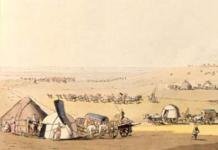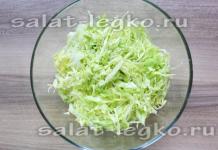Making nails is one of the most cost-effective manufacturing processes. For a full operating cycle, you will need special equipment and several additional accessories. An important step is to become familiar with the specific design of the nailing machine and the principle of its operation.
Description of the nail structure
Modern nailing is a complex production complex that is designed to perform several types of operations. Because of this, making it yourself will be very problematic.
The main manufacturing material is wire made of steel, copper or brass. It is supplied in coils, so before production begins it is necessary to carry out its processing - unwinding and straightening. Then you can start producing finished products.
Stages of nail production using a special machine.
- Installation of wire into the gripping mechanism of the equipment.
- Pulling the workpiece, as a result of which it is leveled.
- Forming the nail head. Screw-cutting heads are used to fix the workpiece. The wire end is deformed using an impact mechanism. As a result of this, flattening and formation of the cap are performed.
- The workpiece is pulled to a specified length. A pair of cutters cut on both sides, thereby forming the sharp end of the nail.
This is a general description of the production process using a nailing machine. Despite the slight difference in the layout of equipment models, the production process technology remains unchanged.
In order to optimize the cost of purchasing equipment, you can make an unwinding device yourself. It is a conical metal structure mounted on a vertical support post.
List of main technical characteristics

The next step is to determine the required technical and operational qualities of the machine. The defining indicator of nailing equipment is its productivity, i.e. speed of production of finished products by the machine. But in addition to this, a number of other factors should be taken into account.
The drive of all moving mechanisms is often carried out through cam units. They are connected to the electric motor. The speed of operations, as well as the maximum diameter of the steel workpiece, depends on it. Setting up the equipment is carried out by adjusting the wire feed units, setting the force of the impact mechanism to form the nail head. In this way, you can set the operating frequency of all machine mechanisms.
Main technical characteristics of equipment for making nails:
- maximum and minimum diameter of the rod;
- limits for changing the length of the workpiece;
- performance;
- weight and dimensions of equipment;
- power consumption of the electric motor.
The diameter of the finished nail head depends on the cross-section of the wire. The impact mechanism has a standard size. During the production process, you can only change the amount of force exerted on the workpiece.
The advantage of modern nail production machines is the almost complete automation of their operation. It is important to correctly configure the primary parameters and timely feed the wire into the gripping unit of the machine.
Optional equipment

In addition to the above, it is recommended to purchase several additional units for the production installation to optimize the production process. They are designed for subsequent processing of nails and their packaging.
The wire used has a protective layer of lubricant that prevents it from rusting during storage. However, this gives the finished product a non-marketable appearance. Therefore, for final processing of nails, it is recommended to purchase or make your own industrial rotating drum.
It is a container installed on a supporting structure. On one side the drive from an electric motor is connected. The drum is filled with a small amount of caustic soda and ready-made nails. During the rotation process, the surface of the products is cleaned. After this treatment, the nails are completely ready for packaging.
Additionally, you can buy a filling machine. With its help, even at the production stage, you can make packaging of finished products for further storage or sale. You must first purchase containers for packaging the finished product.
For a detailed understanding of the operating principle of the nail production machine, it is recommended to watch the video:
How did ancient people make nails? The first nails were invented back in primitive times; they were made from hard wood, fastening together the wooden parts of a home or other buildings. Nails were also made from other natural materials, using fish bones or sharp plant thorns. In the Borovichi district there is a nail museum, where you can see nails from different times, ranging from wooden ones, of different sizes and brands.
By the way, wooden nails have never lost their relevance. At the beginning of the 20th century, village shoemakers skillfully hammered miniature birch nails into the soles of their boots. The birch stilettos swelled from the water and held the soles tightly.
The answer to the question of when and from what metal nails were made in the old days suggests itself. The first metal nails began to be made in the Bronze Age, casting or forging them from copper and bronze, and subsequently, in the Iron Age, from a more durable material - iron.
Depending on their purpose, the nails had their own names. For example, “baroque nails” were used for the construction of river vessels, and “ship nails” for sea shipbuilding.
In the 19th century in Europe, the production of nails in factories was carried out manually in a handicraft way (small-scale production using manual labor): blacksmiths brought a metal rod to a heat in a forge, stretched it on an anvil and sharpened it at the end. After this, the workpiece at the head was cut off and flattened in a block with a hole with a hammer to give the shape of the head.
Nails only became a common commodity in the first decades of the 19th century with the invention of forged and wire nailing machines. Wikipedia states that the patent for the nailing machine was received in 1790. However, in the dictionary of Brockhaus and Efron we will see a different date: “The patent for the first machine for making nails was received in England in 1606 by Sir Davis Bulmer,” and it is noted that this invention had no effect on practice.

What and how are nails made nowadays?
Today they are made mainly of steel. For special purposes, nails are made from copper, brass, bronze, zinc and other materials. There are examples of the use of more unusual materials. Germany produces steel nails with a thin polymer coating. Their use is justified in the furniture business; thanks to the protective coating, rust does not damage expensive wooden products. Fiberglass safety nails are as strong as iron fasteners. They are also used for fastening furniture parts, in shipbuilding, etc. Plastic nails are produced in Japan. They are very durable and can be easily driven even into oak boards.

In modern nail production, rotary presses are mainly used. Products – products with a length from 6 to 400 millimeters and a thickness from 0.8 to 8.8 millimeters. To make nails, wire with a round cross-section is used as semi-finished products.
The working mechanism of a nail machine consists of a simple algorithm: the device cuts a nail to the required length, forms a head and forms a pointed end.
The video shows the process of making nails on a machine.
A little history
As you know, a nail is a pointed rod, usually iron (steel), with a head at the blunt end. Even in ancient times, nails - these simple fasteners - were made from fish bones, plant thorns, and durable wood. As soon as man learned to handle metal, metal nails appeared - cast and forged.
Previously, in Rus', the concept of a nail was interpreted somewhat more broadly. Thus, a nail was used to call an iron knitting needle (pin) with a cap or a crutch, and planed wooden pins (without a cap, of course), grouts, dowels, and pegs fixed in a wall or on a hanger, and even plugs in barrels.
The largest of all the nails was a spire, the length of which reached a whole arshin, that is, 0.71 m. The spiers were used to nail racks to the walls and sew ship plating.
Next, in order of decreasing size, came the square and floor nails, then three-, two- and single-plank nails, tenoning, scale (plaster), wax wax, popular print (twenty), carriage (wallpaper), pin (lining, lining, shoe).
The size of nails was previously determined by the number of nails per unit of weight, for example, in a pood or a pound. So, in a pound of bar nails there were from 200 to 1000 pieces (depending on the size).
Troetes usually came out to 800 pieces per pood; it was a large roofing nail, which could be used to nail three boards at once, one on top of the other.
Wax - a door (floor) wallpaper nail with a wide head; a thousand of these nails weighed about 3 pounds; the nail was driven in with four blows of a hammer.
The carriage (wallpaper) nail was used for upholstery. These were small nails, the number of which reached a thousand in half a pound.
A pin (tiftik) is a small nail without a head, it was used in shoemaking.
How nails are made
Depending on the manufacturing method, nails are divided into wire, carved and forged.
Wire nails are the most common. They are made from steel wire of the appropriate diameter on special automatic presses. Moreover, forming a wire nail is much easier than preparing wire for a nail.
Carved nails are now rare. These nails are cut or stamped from sheets or strips of steel. Note that the usual cap-head, like that of wire nails, is absent in carved nails. Previously, carved nails were used in shoemaking, for fastening glass frames. Nowadays they are occasionally found on sale in the form of hooks for hanging shelves (Fig. 1).
Forged nails are obtained, naturally, by forging (hand or machine). So, if necessary, you can make forged nails yourself. To do this, you will first need a steel bar with a diameter corresponding to the diameter of the head of the future nail (in fact, the nail can be pulled out of any piece of steel). A stove, fire, and gas burner will serve to heat the nail blank, a massive vice will replace the anvil, and a sledgehammer (or hammer) and pliers (or pliers) will complete the set of forging equipment.
During the forging process, the blacksmith places a hot steel rod of suitable diameter on the edge of the anvil, hammers the steel blank, forming the head of the nail. Then, after heating the workpiece again, the body of the nail is pulled out and the tip is straightened, after which the nail is separated (cut off) (Fig. 2). A smooth surface is given to the nail head using a sledgehammer or hammer that has an appropriately shaped recess (“hole”). Or, to finish the cap, they use the same device as for making rivets.

If necessary, the head of the nail will always help determine the method of production of this nail. Usually, if there is a lattice pattern on the head, it is a wire nail. Carved nails have smooth, flat heads, while forged nails have hammer marks, unless, of course, the head was processed with a tool with a “pit”. By the way, on the rod of the wire nails just below the head there are visible marks - marks from clamping the rod when forming the head on a nailing machine. This ribbing of the shank is very useful, as it increases the adhesion of the nail to the wood into which it is driven.

Rice. 3. Nailsconstruction: a - with a flat head;
b - with a conical head; c - clubs; g - clubs with jumpers
Rice. 4.Some types of nails: a - tar paper;
b - roofing; c - finishing; g - slate; d - wallpaper
What kind of nails are made?
The diameter of the head of flat-head construction nails is twice the diameter of the shaft. For nails with a conical head, this ratio remains approximately the same, decreasing slightly with increasing shank diameter.
In reference books and other specialized literature, construction nails with a flat (or conical) head are designated, respectively, by the letter P (or K), followed by the dimensions (diameter and length) of the nail. Thus, a construction nail with a flat head with a diameter of 1.2 mm and a length of 25 mm is designated as follows: nail P 1.2x25. (Actually, the designation of these and other nails is followed by the GOST number, but we will not give GOSTs here.)
A type of wire construction nails are the so-called club nails, which have a shape along the rod. The hollows (grooves) are either solid - from the cap to the tip (Fig. 3, c), or with bridges (Fig. 3, d). Such nails hold more securely in wood and are used, for example, for fastening rolled roofing materials. “Ordinary” club nails are indexed T, while club nails with a bridge are indexed TP.
Also among construction nails there are (sometimes) carved nails. Compared to wire nails, such nails do not bend as easily when driven, but are more labor-intensive to manufacture and “actively” split boards if they are fastened close to the end of these boards.
Round roofing felt nails (Fig. 4a) have a flat head of slightly increased diameter in order to more reliably “hold” the rolled roofing material (tar paper, roofing felt). The diameter of the nails is 2 and 2.5 mm with a length from 20 to 40 mm.
The following types of nails are distinguished by purpose: construction, tar paper, roofing, finishing, wallpaper, packaging, molding, decorative, plaster, slate, horseshoe, ship, etc.
Construction wire nails, depending on the diameter of the rod, are made either with a flat head (Fig. 3,a) or with a conical head (Fig. 3,6).
Thus, nails with a core diameter of up to 1.6 mm are formed with a flat head, while nails of large diameter have a conical head. The sizes of nails produced in Russia are given in table. 1.

Roofing nails are produced in only one type: diameter 3.5 mm and length 40 mm (Fig. 4.6). That is, the nails are strong enough to pierce the roofing iron (if necessary).
Finishing round nails have a small, well-finished, semi-circular head. The diameter of finishing nails ranges from 0.8 to 2 mm with a length from 10 to 40 mm.
Container nails are made, like construction nails, with a flat and conical head. True, the diameters of the heads of container nails are somewhat larger and exceed the diameter of the rod by 2.2...2.5 times. Nail diameter 1.4...3 mm, length 25...80 mm.
Slate nails are designed for nailing asbestos-cement sheets to a wooden roof sheathing (Fig. 4, d). Of course, the sheets themselves are not pierced with nails, but holes are drilled for them. The nail is a round rod with a round washer-head firmly rolled on it with a diameter of up to 18 mm. The diameter of the nail rod is 5 mm, length - 90... 100 mm. Nails must be galvanized to prevent them from rusting and, as a result, dirty streaks on the roof.
Ordinary steel construction nails can to some extent replace slate nails if they are pre-painted with oil paint and a leather or rubber washer is placed under the nail head. Before driving them into the sheathing, the rods of the nails are lubricated with machine oil so as not to damage the layer of oil paint previously applied to the surface of the rod of the nail being driven in.
Do not make a large hole in the washer as it must be pulled over the shank of the nail. After fixing the nail, the washer should press tightly against the surface of the asbestos-cement sheet, completely covering the edges of the hole. The drained water will then not get under the leaf.
It is believed that wallpaper nails appeared in France at the beginning of the 19th century. The price list of one of the Parisian companies of those times listed up to 150 types of elegant wallpaper nails, which were then made of silver and steel (nail heads were gilded, polished, etc.). Until the 30s of the last century, such nails were obtained by casting; as a result, they had an irregular shape and were difficult to drive into the wood, and the latter did not “hold” such nails.
Subsequently, the invention of special presses helped eliminate the disadvantages of cast wallpaper nails. Now the official name of such nails is round wallpaper nails (Fig. 4e). The diameter of their rod is 1.6 and 2 mm, the length of the first is 12 or 16 mm, the second is 20 mm.


Decorative nails are used for fastening upholstery materials to furniture, suitcases, doors, as well as for other upholstery work (Fig. 5). These nails, unlike other types, are composite. Their heads are usually attached (rolled) to the rods of construction, wallpaper or finishing nails.
Heads are stamped from any thin sheet metal, head shapes are round, square (or other shapes), head sizes are 6... 12 mm or more. The corners around the perimeter and protrusions on the surface of the heads are rounded. The front surfaces of the heads are shiny and polished.
Decorative nails with brass heads are sometimes made using a different technology. Here, steel rods are borrowed from standard nails, these rods are placed in sand molds, which are filled with molten brass. The production of nails is completed by turning and polishing the heads.
Nails with porcelain heads are made using the following simple technology. The heads are squeezed out of plastic porcelain or earthenware mass using appropriate forms, fired, and polished. After this, the heads with rods inserted into special recesses are heated and the recesses are filled with a special low-melting composition.
table 2

Ship and barge nails (square and round) are used mainly in shipbuilding (Fig. 6). They are forged from low carbon steel wire, like most of the nails previously described. Finished nails are coated with oil paints or galvanized. In table 2 shows the dimensions of some ship and barge nails.
Shoe nails (shoe nails) are used in the manufacture and repair of shoes to temporarily tighten the top of the shoe on the last, as well as to fasten the top to the sole and heel.
Nails called tex are used to tighten the top of the block. Machine teks are wire round nails with a spear-shaped point of an oval section or with a quadrangular pyramidal point. The diameter of the rod of this tex is 1.1 mm, the diameter of the head is 2.8 mm, the length is 6... 15 mm. Hand teks are carved (stamped) nails. They have a faceted body (rod), gradually turning into a thin point. The thickness of the text is 1...1.4 m/w, the “diameter” (width) of the head is 3...4.5 mm, length 9...19 mm.
The heels are fastened using “A k me” - round wire nails with a conical head (small) and a point. Nail shaft diameter 2.1 mm, length 19...24 mm.
The soles are connected to the top with round wire shoe pins without heads and with a spear-shaped point. Pin diameter 1.6...2.6 mm, length 10...19 mm.


Horseshoe nails, of course, are designed for attaching horseshoes. An old Spanish proverb says: “Because of a nail, a horseshoe is lost; because of a horseshoe, the horse and rider die.” So for horse owners, horseshoe nails are a very important thing. For example, Napoleon's cavalry, artillery and convoy during the retreat from Moscow failed mainly due to the lack of nails and horseshoes. The horses “slipped” at the slightest rise even with the smallest caliber guns.
A horseshoe nail (uhnal) is a fastener that is something between a nail and a rivet (Fig. 7). It has a head and a point, like every nail, but the horseshoe nail is held in the material (hoof) not only as a result of friction. A horseshoe nail is sometimes bent on both sides so that it holds itself and the horseshoe more securely. Although usually the lower bend is “replaced” by the head.
Ukhnali is made from carbon steel of ordinary quality (StO, St1, St2, StZ), containing a small amount of carbon, which ensures the necessary ductility of the metal. After all, the bent end of a horseshoe nail, which serves to hold the horseshoe and the nail itself, works under conditions of constant shocks and blows. Modern horseshoe nails are rectilinear in shape (see Fig. 7). Their main dimensions are given in Table 3.
Variants of horseshoe nails used previously are shown in Fig. 8 (some of the nails are in a bent “working” state).
At home, horseshoe nails are made using simplified technology. Wire with a diameter of i 6 mm from St2 or StZ is the starting material. First, a workpiece 500...700 mm long is cut from the wire, then one end of the workpiece 100...120 mm long is heated to approximately 1300 °C, which corresponds to the bright white color of hot metal. The hot part of the workpiece is placed on the anvil, a “rectangular” rod is formed (at a length of 35...40 mm), and brought together onto a wedge. At the next stage, the head of the ukhnal is made, after which the finished ukhnal is chopped off at the cutting, maintaining the length of the head at 7...8 mm.
Factory produced horseshoe nails must meet the following specifications:
■ the surface of the nail is clean, without cracks, nicks, delaminations, burrs and traces of corrosion;
■ the head is flat, minor protrusions (up to 0.2 mm in size) are allowed at the junction of the rod and the head
■ non-parallelism of the sides along the width of the rod is no more than 0.3 lsh;
■ “bluntness” of the tip no more than 0.5x0.5 mm.
The manufacturer's trademark and nail number are placed on each head.
Table 3

The nails are different. In Poland, a method for producing nails with a triangular cross-section of the rod has been developed. Their production is based on drawing steel wire through a triangular hole (die). Such nails have less mass, they “sit” more tightly in the wood and are not capable of turning. A triangular nail “enters” the wood with less force than a round one.
Plastic nails are manufactured in Japan. They are not magnetized, do not rust, are easy to saw and “accept” almost any paint. These nails can be driven even into durable oak wood. The adhesion of plastic nails to wood is 4...5 times more reliable than that of ordinary nails.
The main disadvantage of new nails is that you need a special pneumatic tool to drive them.
Our country showed glass nails made from broken bottles in 1991 at one of the international construction exhibitions.
When the nails are from the wrong wall
Nails, of course, are best used in accordance with their purpose. But if there are dozens of varieties of nails, then the number of “tasks” of nails is in the thousands.
Thus, the same type of nails therefore has to be used in a wide variety of circumstances. By the way, this also happens because rarely does anyone have more than 2...3 types of nails.
As a rule, temporary structures, say, supports, scaffolds, etc., are knocked together with any nails at hand. The choice of nails for more serious cases is determined by a number of factors:
■ quality of materials being joined;
■ the condition (humidity) of the environment where the nails are located;
■ the thickness of the “combined” materials.
Most often it is necessary to make a short nail out of a long one by cutting off part of the rod and sharpening the resulting end. True, the latter can be avoided if you chop or saw the rod not perpendicular to its axis, but at an angle to it (Fig. 9).
In fact, the easiest way to shorten the shank of a nail is to use an axe. But, of course, it is not a nail placed on a board that is chopped with an ax. Is it dangerous! After all, scattered parts of the nail with the effect of bullets can hit the unlucky “shortener”.
Rice. 9. This is how they shorten the point of the nail,


Rice. 10. Shortening the nail on the ax
Here they do things differently and do not lower the ax onto a nail, but place the butt on something hard (Fig. 10). The nail shaft is placed in the right place approximately in the middle of the ax blade. The main character in this operation is the hammer. The hammer strikes the nail at the point where it touches the blade. Dosing the impact force is mandatory. After all, after separating a nail, it is impossible for a hammer to “meet” with an axe, the blade of which in this case will be dulled or chipped. Therefore, after the hammer hits, a thin (fractions of a millimeter) part of the uncut nail shaft should remain between its striker and the ax blade, which can be broken off with fingers or pliers.
If, for example, galvanized nails are needed, but they are not available, then ordinary nails are protected from rust in the following ways:
■ heated red-hot and dipped in some liquid oil (linseed, machine oil, etc.);
■ wipe with wax;
■ coated with oil paint or coal tar varnish.
Learn to hammer nails correctly
What seems easier than hammering a nail? But it turns out that there are secrets here too. We will talk about them below.
Usually, before the nail is buried, its performance is improved. A dull edge is sharpened. The bent rod is straightened and lubricated with some kind of grease or soap if there are traces of rust on its surface. It is even more useful to preserve the nail by first cleaning it from rust with sandpaper and only then lubricating its surface. Some craftsmen are against lubrication, remembering the famous proverb that the faster a nail enters the wood, the faster it will “get out” of it. And this is true, but only if the nail is immersed in the wood by less than 1/3...1/2 of its length. Of course, it is clear that rust on the rod is the same notches or corrugations that prevent the nail from coming out of the board (although rust is still not mechanically formed protrusions).
And one more note. A humid environment “grows” rust on the nail, which thins its core. Therefore, when the end part of the latter is not bent, the nail “modestly” leaves the connection after some time.

Rice. 11. Hold the nail this way while hammering it in
When hammering a nail, it is usually taken by the shaft with the thumb and forefinger of the left hand, placing the point in the desired place. The rod, as a rule, is oriented perpendicular to the “pierced” surface (Fig. 11). Short, gentle blows with the hammer head are applied to the head of the nail until it enters the wood approximately 1/4... 1/5 of its length. Then, with more thorough blows, they drive the nail right up to the head.
Please note that your first attempts at driving nails will most likely be unsuccessful. The blows will be unclear and weak. The fear of hitting the fingers of the left hand constrains the muscles and strains attention. Beginners remove the hand holding the nail as soon as the tip of the nail gets stuck in the wood.
By the way, well-sharpened nails with a rod diameter of 0.8...2 mm do not require preliminary blows at all in order to strengthen themselves on the surface of the board. With the flesh of your thumb, it is enough to press on their head, and the tip will easily enter the board to the required depth, especially if the wood of the board is not overdried. Worries about the safety of your own fingers then disappear.
The movement of the hammer head to the nail head is carried out not in any way, but along a certain trajectory, in which the hammer, at the last moment before hitting the head, moves along a line that is a continuation of the nail shaft (Fig. 12). When this rule is not followed, the nail, in addition to pressure, also experiences stress, leading to bending. True, even the correct trajectory does not guarantee the “slimness” of the rod when driving a nail, since sometimes bending occurs due to the poor quality of its steel, the hardness of the wood, etc.
The stability of the rod against bending will be increased by pliers or flat nails (Fig. 14). In this case, the nail is removed, the resulting hole is drilled, or the nail is tried to be hammered in another place.


The stability of the part into which the nail is driven, its orientation in space, as well as the mass of the part are not least important for the successful penetration of the nail into the material. It is most convenient when the nail is driven into a part located horizontally (Fig. 15). A weighty support (weight, sledgehammer) will greatly facilitate the work of the master.
A thin board, hammering a nail into it, is placed on a support with a flat surface. This is the first condition for maintaining the integrity of the board. The second is preliminary (not through) drilling of the board with a drill corresponding to the diameter of the nail. The remaining undrilled part is necessary for pinching the nail shaft with wood fibers. Sometimes they act differently and drill through the board
pliers with wide jaws (Fig. 13). But even with such guides, the nail is not “unbending”. Knots, wood compactions, and sometimes chipboard are not always surmountable for him. When a knot, or rather its cut, is on the surface of the board, it is better to drill a hole in the right place, slightly less than the thickness of a nail. The question is, to what depth? It's clear that we have to go through a knot. And how to do this, figure out for yourself. Usually the drill reports the passage of a knot and switches to another cutting mode.
A knot inside the board will also stop the nail or lead the tip of the rod away from the straight direction. Further blows will only bend the protruding part with a drill of smaller diameter than the diameter of the nail shank.
There are also other ways to preserve the integrity of the board. Firstly, the thinner the nail, the less likely the board will break. Therefore, a nail with a core diameter of no more than 1/4 of the thickness of the board is usually chosen. Secondly, blunting the tip of the nail with nippers, pliers or a file in some cases saves the board when driving a nail into it. After all, a blunt tip does not push the wood fibers of the board apart, causing a crack to form in it, but breaks these fibers.

When driving a nail close to the end edge of the board, you will definitely split it. A pre-drilled hole with a drill with a diameter equal to 0.7...0.9 of the diameter of the nail shank will avoid the occurrence of a crack.
In hard wood, from which, for example, chair legs and crossbars are made, the nail enters with great difficulty, often bending halfway. Here you can’t do without preliminary non-through drilling. In this case, the hole helps both guide and straighten the nail shaft. The only nails that are sometimes successful against hardwood are roofing nails.
You should not hammer many nails into the same board along the same line - you will split it. A checkerboard or multi-row arrangement of nails will save the board from cracks (Fig. 16). It is clear that the larger the diameter of the nails, the higher their “splitting” abilities.
Connecting parts with nails is based on pinching them with wood fibers of these parts. (The effect of bending the protruding  In this case, we will not consider the connecting parts of the part of the nail with the tip.) Locking the nail is more effective when it is “introduced” across the grain of the wood (Fig. 17). Weaker fibers slow down a nail located parallel to them. Moreover, if you hammer a nail in just 2...3 blows, it stays in the wood more firmly, since the abundance of blows destroys the fibers, because these blows, as a rule, fall on the head at different angles.
In this case, we will not consider the connecting parts of the part of the nail with the tip.) Locking the nail is more effective when it is “introduced” across the grain of the wood (Fig. 17). Weaker fibers slow down a nail located parallel to them. Moreover, if you hammer a nail in just 2...3 blows, it stays in the wood more firmly, since the abundance of blows destroys the fibers, because these blows, as a rule, fall on the head at different angles.
When you need to bend a nail that has protruded outwards by at least 13...18 mm, and bend it so that its end is hidden in the wood, then a metal rod (the handle of pliers, an unusable ground file) is placed under the end of the nail and first a “semi-ring” is formed. (Fig. 18). Then the “half ring” is sunk into the wood, creating a “rivet” joint.
Nail bending sequence
Rice. 19. Doboiniki and work with them:
1 — doboynik;
3 - rod
The end part of a nail protruding from the board with a diameter of up to 2...3 mm can be easily bent simply with the jaws of pliers or pliers.
Nails are always driven in from the side of the thinner part, when, of course, the connection design allows this. The length of the nail should exceed the thickness of the board being nailed by 2...3 times. Boards 100...120 mm wide for cladding the facades of wooden houses (planks, lining) are nailed at each fastening point with only one nail. When the width of the boards is more than 130 mm, they are nailed with two nails.
Nail punchers come in handy where the hammer head or toe cannot reach. So, shown in Fig. 19, and the hammer is used for final driving of nails into the grooves of parquet riveting when installing floors. The length of such a hammer is 100 mm, diameter is 18 mm, weight is 0.144 kg. It is made from tool steel. The working part of the finisher, 10 mm long, is hardened to a hardness slightly less than the hardness of the file; for convenience, a mesh knurling is provided on the body. The striking part of the hammer is convex, the working part, in contact with the head of the nail, is concave.



Rice. 21. Connecting parts using nails (options)

Nails are also finished using a tube and a rod (Fig. 19.6).
When using one type of nail or another without taking into account their purpose and condition, as well as the hardness of the wood, there is a chance of bending them. But bent nails should not always be removed from the board. First, try straightening them with a hammer and something heavy like an anvil. For example, a piece of angle steel, a second hammer, or a piece of iron of a suitable shape will perfectly serve as such an anvil. This straightening of the rod can be repeated 2-3 times.
When, when connecting boards, it is not forbidden to hammer nails into them at an angle (Fig. 20), then this is what should be done. After all, here the rod will pass through a larger number (?) of wood fibers, which will provide increased strength of the connection. This technique is especially effective when the end of the nail cannot be bent. (In fact, here the strength of the joint increases as a result of the mismatch in the direction of the “tearing” force, which is usually perpendicular to the board. - Editor's note.)
Connecting parts with nails is quite simple in execution, but not reliable enough in operation. Wooden parts nailed together, but not glued with any compound, successfully become loose under changing loads. In Fig. 21 shows options for connecting wooden parts with nails.
A few words about nailing plywood. The latter usually consists of several layers of veneer, the fibers of which are directed at right angles to each other, which ensures a strong fit of the nail in it. And further. To connect two strips of plywood at right angles, they are nailed with small nails to the corresponding sides of the block.
Learn to pull out nails correctly
Nails are removed from the material using pliers, a nail puller, pliers, etc. At the same time, “extracting” nails from boards, shoes, etc. requires no less ingenuity and skill than hammering them. But in all cases, in order to use pliers or other listed tools, you have to lift (expose) the nail head.
When the end of the nail is bent, they straighten it and try to knock the nail out from the back. And to make the nail come out of the material more easily when hitting its tip, its protruding part is lubricated with fat, soap, and water. Lubrication is especially necessary when the “tail” of the nail is heavily rusted. Note that when straightened, the “tail” often breaks off. Then, with the toe of a hammer or another nail, you have to act on the end of the “fragment” located in the material (Fig. 22) in order to lift the head of the latter. (Chisels, hammers, metal rods of suitable size are also suitable for this purpose.)


But if you cannot reach the tip of the nail, since it is located in the thickness of the part, you can only lift the head by the head. This is done using a chisel or a screwdriver with a rod passing through the entire handle (this one will not break!), as well as a hammer.
A special mini-nail puller made from a screwdriver with a forked blade, which is slightly bent in relation to the rod, will greatly facilitate the removal of the smallest nails (Fig. 23).
There are times when it is not possible to pick up the cap with a screwdriver or a chisel. Then you will have to resort to using a chisel and make a depression around the head, which will help to tightly grasp the cap with the jaws of the pliers. If for some reason this option does not work, cut off the inaccessible cap with a chisel, and use a suitable
Use a nail (or mandrel) to knock out the old nail from the opposite side of the part.
So, we learned how to get to the head of a hammered nail and prepare (raise) it for gripping the nail with a specialized nail tool.
As already mentioned, pliers are most convenient for removing clogged small and medium-sized nails. The wider the jaws of the pliers (size “K” in Fig. 24) and the longer their handles, the less force will be required to “lift” the wood rod. However, artificially lengthening the handles using metal tubes is unacceptable from a safety point of view, since the usual result of such rationalization is injury.
“Dragging” a nail with pliers is most convenient at first, when the sponges pick up the head. But now the rod protrudes from the wood by 5...10 mm and it becomes impossible to further pull the nail without changing the grip.

Therefore, now you should use your sponges to grab the nail shaft below the head. But the rod is smooth and slippery. And in order to reliably hook the rod with the edges of the jaws, significant force is required. It would be nice to continue to pull out the nail and use the head again. But is this possible? Of course, only the supporting surface for the outer roundness of the jaws will have to be increased by placing planks, plates, etc. under the pliers. By the way, a similar technique is used at subsequent stages of pulling out a nail, and when using tools of a different design (nail pullers, wire cutters) for this purpose.
Here's another trick that will help you when pulling out nails. When a nail is removed stepwise (in several grips) from the wood, tilting the pliers in the same direction, the shape of the removed nail will resemble an arc and without straightening such a nail cannot be hammered into the board again. However, the work of straightening the nail will be minimized if you use pliers in one plane, but tilt them in different directions when removing the nail.
By the way, additional wooden or plastic supports placed under the outer roundness of the pliers jaws will perfectly protect the surface of the part itself from damage.
A carpenter's hammer with a forked nose is also convenient for removing nails (Fig. 25). And here the method of stepwise pulling out nails outlined above is quite acceptable. Is it true,
The wooden handle of a hammer is not able to withstand such loads for long and usually soon breaks near the head. If this happens, and there are still a lot of hammered nails left, weld a metal pipe of a suitable diameter to the hammer. Now the handle of the nail hammer will not break.
But it’s still easier to use pliers than a hammer. The latter, due to its “frozen” dimensions, often turns out to be either too bulky or too miniature to grip the desired nail. And in the absence of a head on the nail, such a hammer can only slide along the rod.
Nails are pulled out with pliers only when there are no other tools. Please note that wire cutters are mainly used for stripping wires of insulation and cutting wires made of non-ferrous metals. Therefore, the cutting edges of the wire cutters will certainly become dull, or even chipped, if they are used to clamp steel nails. Moreover, while holding a nail with a diameter of 1... 1.5 mm, you cannot squeeze the handles of the pliers too much, so as not to bite the nail.
When pulling out nails, the hammer head sometimes turns out to be more necessary than pliers, for example, when a nail sticks out of the board almost its entire length. Here you will have to drive the nail “back” first. In this case, it is better to pre-lubricate the cores of large nails with oil, especially if they are rusty. And in order not to dull the edge of the rod too much, a brass or aluminum plate is placed on it (Fig. 26). So, the tip was driven into the wood. Now the final removal of the nail behind the pliers.

Rice. 25. Hammer at work
So you decided to use for some purpose an old board of suitable size with nails previously hammered into it. But should you always carry out the labor-intensive work of “pulling out” nails? Clearly not. When the decorative appearance of the board or product as a whole does not matter, then it is better to either bend the protruding part of the rod or cut it off with a hacksaw. Sometimes it’s easy to break it off. The protruding head of the nail can simply be driven into the wood with one blow of a hammer.

If the boards have already become unusable, but the nails sticking out in them are still okay, do not throw them away with the boards - they will still be useful. The easiest way to get nails here is with fire. Rejected poles and beams are burned in a furnace, on a fire, and, naturally, unburned nails are selected from the ash. Large nails are straightened, knocking down scale; small ones are usually no longer good for anything. A nail that has been subjected to fire treatment, even with the scale removed, has an uneven surface, so before driving such a nail, it is again lubricated with oil. As you know, nails that have undergone fire are less susceptible to rusting. Some craftsmen heat new nails red-hot and immediately after that throw them into cold liquid oil. As a result, the nails acquire hardening and the ability not to rust for a long time in a humid environment.
Wooden structures connected with nails are first broken with a hammer or sledgehammer. The goal is to create gaps between the parts, into which the blade of an ax, crowbar or nail puller will then be inserted. The finer the sharpening of the tool, the easier the blade penetrates the gap and the faster the process of obtaining individual structural elements.
V. Volkov
What could be simpler than a nail, you ask - this fastener is thousands of years old! But it’s not so simple if you look closely. Today, dozens, if not hundreds of varieties of nails are produced - literally for all occasions.
So where do they all apply?
Types of nails
For centuries, each nail was unique and precious and was forged or cast by a blacksmith. Nailers appeared only about 200 years ago, so nails became cheap - and the first standards could be introduced for them. Modern nails have a length of 6-310 mm and a thickness of 0.8-8.8 mm, made of steel, including stainless steel, copper, brass, bronze, aluminum and even plastic. The surface is often protected from corrosion by zinc, chrome, brass or copper.
All the variety of nails has in common the method of fastening - hitting with a hammer.
But there are changes here too: nail guns, or nailers, pneumatic and electric, have appeared. Special nails made of hardened steel are driven into concrete and brick by a construction gun using the energy of flammable gas or a powder charge.
An ordinary construction nail. (1)
The most widespread, made of low-carbon steel. There is a notch on the surface of the head to reduce hammer slippage. Such nails are produced up to 310 mm long; they are used to make temporary scaffolding or scaffolding. Most construction nails are galvanized or thermally galvanized. The former are best used for interior work, the latter for exterior work. For buildings in places with high humidity, nails made of acid-resistant steel are suitable; they are made in lengths of 75 and 100 mm.
Copper nail (2)
Structurally the same as the construction one, only made of copper alloy. They are used where durability of tens and hundreds of years is needed - copper roofs, corrosive operating conditions, wooden shipbuilding. The pleasant appearance attracts furniture makers and decorators, for whom small copper nails are forged in the form of a tex: a flat elliptical head and a pyramid-shaped rod turning into a point. The only drawback is that they are quite plastic. Where higher joint strength with the same corrosion resistance is required, brass nails are used.
A screw nail, also known as a pallet nail. (3)
Available with a full, full-length rod, and incomplete screw made of square wire. It creates a reliable connection; it is used for the manufacture of pallets, containers, fastening floorboards - that is, such structures that are prone to bending under the influence of variable humidity or loads. The strength of the fastening is four times greater than that of a regular construction nail, and technically making such a connection is easier than tightening a screw.
Duckert nail.
It is distinguished by the small size of the cap, which often has a recess for better holding the point of the doboynich. Using a hammer allows you to avoid deforming the wooden surface with a hammer at the last blow. The surface of the cap is uneven so that the putty sticks to it better. Such nails are used there. where the fasteners should be inconspicuous - lining, door and window trim, baseboards.
Comb, also known as rough, corrugated, ring nail. (4)
The rod has transverse notches, turning the nail into a kind of harpoon. With a flat or conical cap. They give a very strong connection and are used in the production of containers. It is almost impossible to remove such a nail using pliers or a nail puller. Compared to a regular nail, it gives a five times stronger connection. For working with hard materials it is made of hardened steel.
Roofing, also known as tar paper, nail(5) are distinguished by a shorter rod length with an increased cross-section compared to conventional construction nails. A flat cap with a large diameter helps to better retain soft rolled or sheet material - roofing felt, roofing felt, construction cardboard. All roofing nails are galvanized.
Club nail. (6)
It differs in that for better retention in the wood, longitudinal grooves are formed along the entire length of the rod. They can be solid or with cross bars. These unusual nails are used to fasten rolled materials such as roofing felt and roofing felt.
Slate nail.
An enlarged cap made of galvanized steel is mounted on a rather long rod, under which a rubber washer is placed before driving. In this way, a hammered nail seals the hole from water ingress and does not create dangerous stresses in the slate sheet during temperature fluctuations. The length should be chosen taking into account the height of the slate wave - the nail is driven only into the crest of the wave.
Wallpaper nail.
Smooth cylindrical rod 12-20 mm long with a decorative cap. This nail is used for covering soft materials.
Drywall nail- a type of roofing nail. Its rod is thinner, and its head is wide, not crushing the porous material, but at the same time holding it securely. These nails are well suited for fastening fiberboard and construction cardboard. A ring groove can be applied to the rod or part of it, which improves adhesion to the wooden base under the drywall.
Finishing nail. (7)
Used for fastening lining, platbands and similar thin parts, the surface of which is undesirable to be spoiled by the appearance of nail heads. Therefore, the head is very small, and it is recessed into the surface of the wood. The steel rod can be galvanized, copper-plated or brass-plated, and bronze finishing nails are occasionally found.
Nail with a double head (doublet). (8)
It is used for temporary fastening, for example, formwork and collapsible structures such as greenhouses. The top cap makes it easier to pull out without damaging the entire structure, and the bottom one securely holds the nailed part.
Nail with an oval cross-section head.
This cross-section reduces the risk of wood splitting along the fibers - if the major axis of the oval is oriented along them. They are used as parquet, for fastening platbands - when the head needs to be buried under the surface of the wood.
Decorative nail. (10)
Used primarily for finishing upholstered furniture. Hats can be round, square and shaped, with cast or embossed patterns. The imagination of designers is almost limitless.
Shoe nail(9) - for attaching soles, heels and other parts of shoes. The plantar nail has a cylindrical brass or steel rod with an oval-shaped point, and a conical head. To fasten heels, tetrahedral nails are used; they are also called hand tex. Having the shape of a truncated wedge with a rectangular cross section.
Forming nail.
The only nail is completely dull, the shaft does not sharpen at all. Used when connecting foundry molds for casting metal, made from low carbon steel.
Ukhnal - horseshoe nail. (eleven)
Types of nails for various applications - photos
- It is better to nail a thin part to a thick one.
- The nail must penetrate at least a third of its length into the part to which it is nailed.
- It is better to drive nails at a slight angle to the normal and not parallel to each other.
- A nail driven along the grain of wood holds much worse than one driven across.
- You can prevent a wooden part from cracking in the direction of the grain by slightly blunting the tip of the nail.
- A nail will not go into a knot. Not one and never.
One of the main products made from low-carbon steel wire GOST 3282-74 are nails, so the wire received another name - nail wire. For the manufacture of nails, uncoated round steel wire is used.
Hard wire for nails
In production, wire with a diameter of 1.2 to 6.0 mm is used, which is supplied in coils weighing 180-200 kg or in coils weighing 800-1000 kg.
Nail surface wire GOST 3282-74 should not have scale, cracks or sunsets. Minor dents or scratches may be acceptable within tolerance. The wire intended for the production of construction nails does not undergo heat treatment, which allows it to remain strong, but at the same time it must withstand at least four kinks without destruction.
Low-carbon steel wire for general purpose
Specifications:
|
Nominal wire diameter |
Maximum deviation for wire diameter |
|
|
Increased accuracy |
Normal accuracy |
|
|
0,80 |
||
|
3,50 |
||
Nail wire
Currently, inexpensive nails are stamped on special nailing machines. Hank or coil wire GOST 3282-74 is installed on an unwinding device, from which, with the help of a feeding device, it enters the working area, where the nail is formed. Depending on their purpose, nails are made with different head sizes and are divided into:
— construction nails GOST 4028-63;
— felt nails GOST 4029-63 with an increased head size;
— slate nails (the head is made of galvanized steel);
- forming nails (small head and long nail shaft).
For external construction or finishing work, it is necessary to use galvanized nails in order to avoid the appearance of rust on the head and around the nail.
High-quality galvanized nails (nail wire can be purchased from our company) are made from uncoated nailing wire and then galvanized. Galvanized wire cannot be used for production, since at the moment of cap formation and cutting, the integrity of the zinc coating is compromised.
Nails are not only one of the oldest, but also the most common fastening elements. Any construction, repair, any activity related to the assembly of any product cannot be done without nails. Therefore, it is not at all surprising that the demand for this fastener does not decrease over time, which means that the production of nails can bring considerable benefits.
To start this business, it is enough to have equipment such as a machine for making nails. Moreover, the production of fasteners can be established in any volume - from an industrial scale to the production of nails purely for their own needs, which will not hurt, for example, furniture makers or builders who get an excellent opportunity to save on the purchase of fasteners.
What material are nails made of?
At the same time, the cost of the finished product, that is, the nails themselves, will depend solely on the cost of the materials purchased for their production - wire, which is made of low-carbon steel and sold in reels of various weights. The size of the nails produced will also depend on this wire. A conventional nailing machine is capable of producing nails with a diameter of up to 1 to 6 mm.
Features of the machine for making nails.
The most important feature of the machine for making nails is that it operates fully automatically. The only operation that in this case has to be performed manually is changing the wire reel. By the way, the fact that the wire is sold in reels greatly facilitates the entire process, since the reels, mounted on a special machine holder, simply unwind, which ensures a long continuous production process.

All machines for making nails can be divided into 4 categories:
- machines capable of producing nails with a diameter of up to 2.1 mm and a length of up to 60 mm;
- machines producing nails with a diameter of up to 4 mm and a length of up to 120 mm;
- machines producing nails with a diameter of up to 6 mm and a length of up to 200 mm;
- machines that produce nails with a diameter of up to 9 mm and a length of up to 320 mm.
Regardless of the category of the machine, all of them can be called universal, since they are capable of producing nails of various types depending on the settings entered at the beginning of the production process, for example, container, construction, finishing or tar paper nails, nails with a flat or conical head.
Among the other technical characteristics that this equipment has, the most important are:
- weight of the machine - depending on the design features, the machine can weigh from 800 kg to 2 tons;
- machine power - selected based on the planned quantity of products and can vary from 3 to 20 kW;
- machine productivity - depending on the category of equipment, the machine can produce from 100 to 600 pieces of nails per minute of operation.
Another feature of this equipment, based on its automatic mode of operation, is that the craftsmen who work on it do not need to be highly qualified or undergo any additional training. In addition, the production of nails does not require a large number of workers. For example, if the production facility is equipped with one similar machine, two people are enough to complete all stages of the work quickly and conveniently.
Operating principle of a machine for making nails.
The process of making nails using a machine is quite simple and consists of several stages.
- A special device on the machine, equipped with a cutting knife, receives wire of the diameter that the manufactured product should have, unwinding from the reel mounted on the spool holder.
- In the device, the fed wire is cut into pieces depending on the required nail length set in the settings.
- After this, the resulting piece of wire falls into another device - a punch, equipped with strikers, with the help of which a cap is formed on one side of the wire, and a pointed end on the other side.
- The finished nail is dropped into a special receiving container using a slider.

The process of making nails is not interrupted as long as there is wire on the reel; as a result, up to 3 tons of products can be produced in one work shift, depending on the category of equipment.
As you can see, making nails of various types is a fairly simple process that requires investment only in the purchase of a machine and wire, as well as in renting a room. According to technological standards, for the installation of two such machines (and this will be enough to start a fairly large-scale production), a room of 50 sq.m is sufficient. In addition, additional space will be required for storing finished products and wire in reels - that is, starting such a business does not require very significant funds.
If we are talking about not too large-scale production, then one machine will be enough, which can be installed, for example, in a garage. Moreover, for these purposes it is quite possible to buy used equipment, spending even less money.
Articles - How nails are made (production and manufacturing). What steel are nails made from?
Nails are one of the most popular and oldest rolled metal products in its entire history.
The first nails were essentially forged products; at the moment, due to the invention of wire and its enormous distribution, this technology has been safely forgotten. A better and much easier way to produce nails was found than ordinary forging (and there were not enough blacksmiths).
The appearance of wire not only simplified and made it cheaper to produce nails, but also made it possible to significantly expand the range of products.
Following the wire, special nailing machines appeared, the task of which was to make nails from wire.
Data Nail machines create nails using the cold forging principle.
Considering the modern process of creating nails, it is worth noting that not any metal is suitable for the production of nails (soft metal is not suitable, since when driving a nail with a hammer it will simply bend). As a rule, for these purposes low-carbon steel wire for general purpose is used (GOST 3282-74), and this wire should not be thermally treated.
To create such wire, four grades of steel are used: St 1 KP, St 2 KP, St3 PS, St 3 KP.
For working with wire coil nail machine it is necessary to wind the wire from the coil; for this purpose a special device is used, as shown in the figure.

After the wire from the coil has passed through the straightening device and entered the feed mechanism of the machine, the actual creation of the nail begins.
The speed of the feed mechanism determines the length of the nail.
The wire moves and enters the area of the “cutters”, where it is “bitten off”, after which the cutters diverge, and a special impact device hits the end of the wire, thereby forming a cap future nail.
After the cap is formed and the impact device moves away, the process is repeated. So, one by one, the nails are stamped.
Forming the sharp end of the nail(opposite from the cap) occurs at the biting stage. The machine's cutters are designed in such a way as to not only detach part of the wire, but also form a tip. According to GOST, the taper angle of the tip should be no more than 40 degrees.
Nail machines from different manufacturers may differ from each other, but the process of creating a nail with their help remains the same, simple and straightforward.
Own production of construction nails and mesh.
Read also:
Types of screws and their scope
Basic properties of tool steels
Strip, description, scope and production

If previously nails were made by forging, now they are made from steel wire on special machines. Production is quite simple and does not require significant material and labor costs.
Registration of activities
First you need to register with the tax office, a form is suitable for this type of activity Individual entrepreneur, you can choose as a form of taxation UTII.
Selecting a room
Any room is suitable for organizing production, as long as it has heat and electricity (380 W). Renting the room will be approximately 20,000 rubles. per month.
Equipment selection
The Internet offers a wide selection of equipment for the production of nails, price from 500 thousand rubles and higher.
Nail production technology
But if we consider used equipment, then we can meet 300-500 thousand rubles.
After analyzing proposals for the sale of machines, as well as studying information on specialized forums, it turned out that the most multifunctional machine is the AG4116 automatic nailer (Productivity 125 kg./hour).
The price of a new machine is 700,000 rubles, a used machine can be purchased for 450,000 rubles.
Cost price
Raw materials.
The raw material for the production of nails is wire. Each type of product uses its own wire size and material. The price of raw materials for the production of the most popular construction nails (120 mm) is 32,000 rubles per ton.
Electricity.
The engine power of the machine is 5.5 kW/hour, the price for 1 kW is 3.35 rubles.
To produce a ton of product, 8 hours of work are required (125 kg/hour). Energy consumption for the production of 1 ton will be: 5.5 * 3.35 * 8 = 147.4 rubles.
Tara
Finished products are packed in wooden boxes. (50 kg).
The cost of 1 box is 400 rubles,
The cost of packaging 1 ton of nails will be 8,000 rubles.
Staff
When purchasing an automatic machine AG4116, 1 person can handle the production (work rate salary is 750 rubles for the production of one ton of nails).
Product prices:
Prices for products depend on the purpose and standard size of nails, so the price for the most popular brand M120 is 50,000 rubles per ton.
Calculation of income and payback of nail production
Based on the planned production volume of 20 tons per month, the planned revenue will be 1,000,000 rubles per month
The manufacturing cost will be 817,940 rubles (the cost of 1 ton is 40,897 rubles * 20 tons)
Gross profit: 182,060 rubles
Administrative expenses (rent, fuel, communications) + taxes: RUB 50,000. months
Net profit: 132,060 rubles per month.
Net profit margin: 13%
Payback:
- When purchasing a new machine = 132,060 rubles / 700,000 rubles. Payback 5.3 months
- When purchasing a used machine = 132,060/450,000 rubles. Payback 3.4 months
Victor Stepanov, 2012-03-01
Questions and answers on the topic
No questions have been asked about the material yet, you have the opportunity to be the first to do so


























